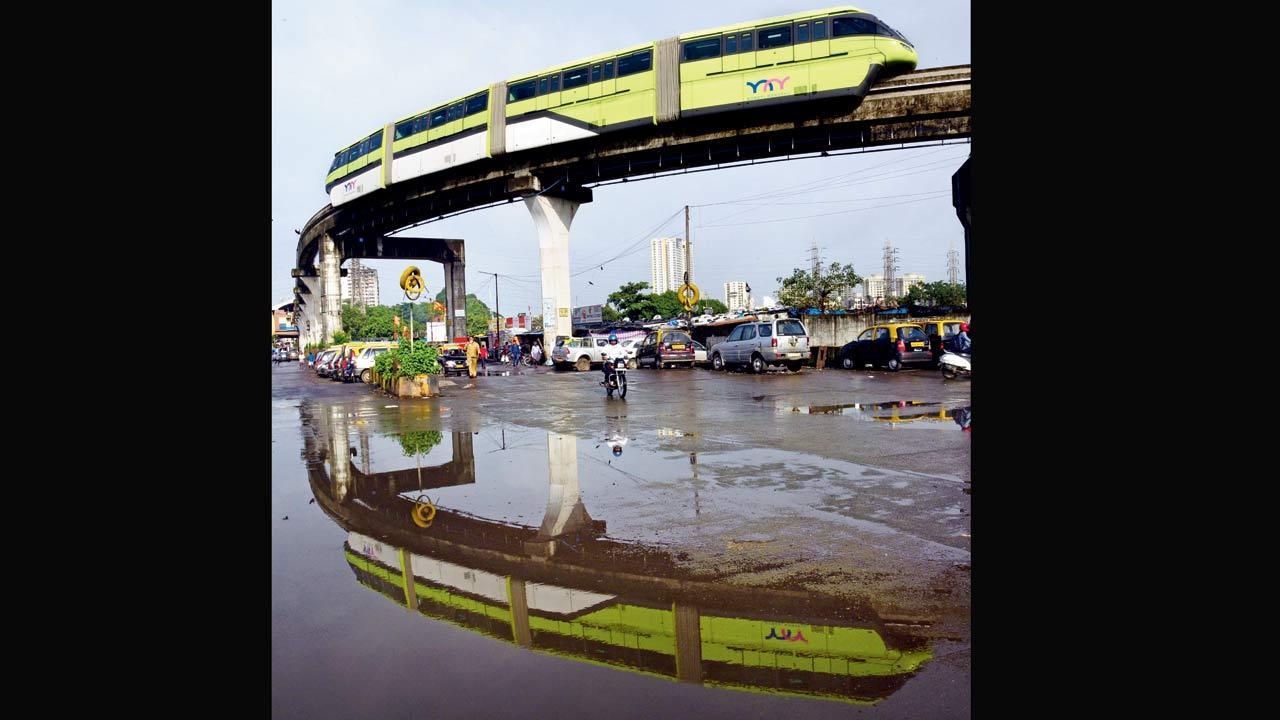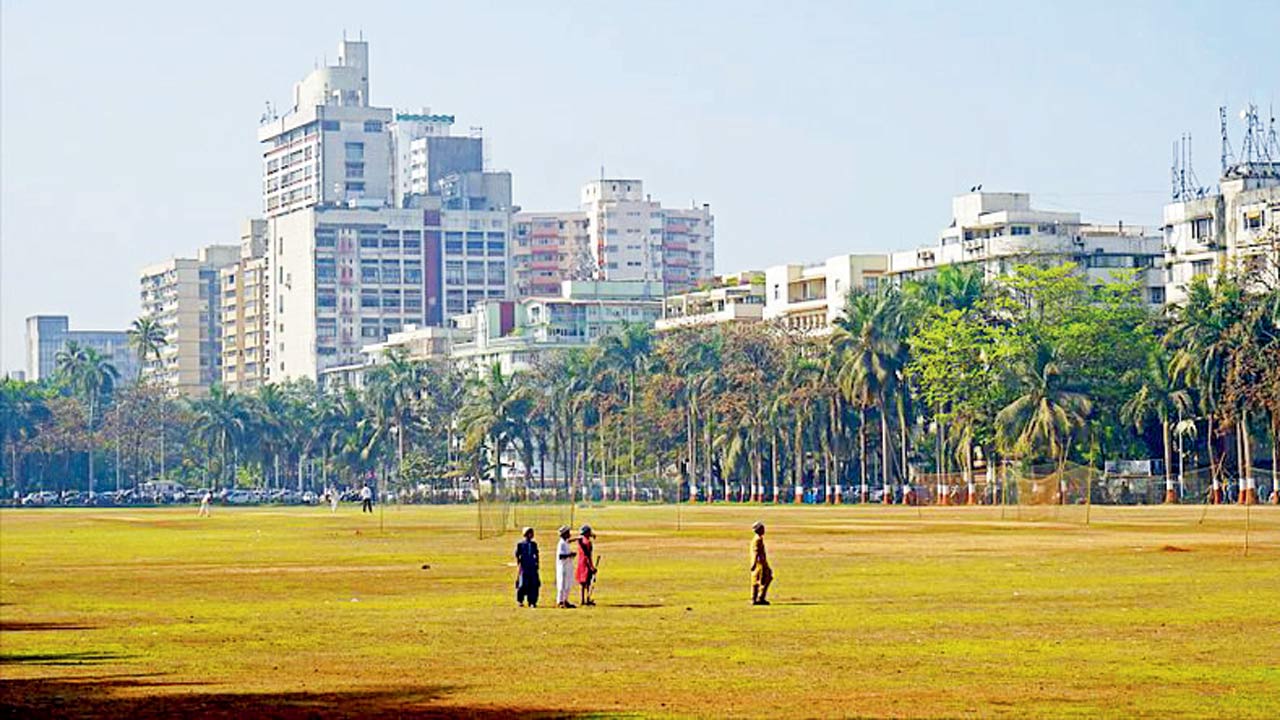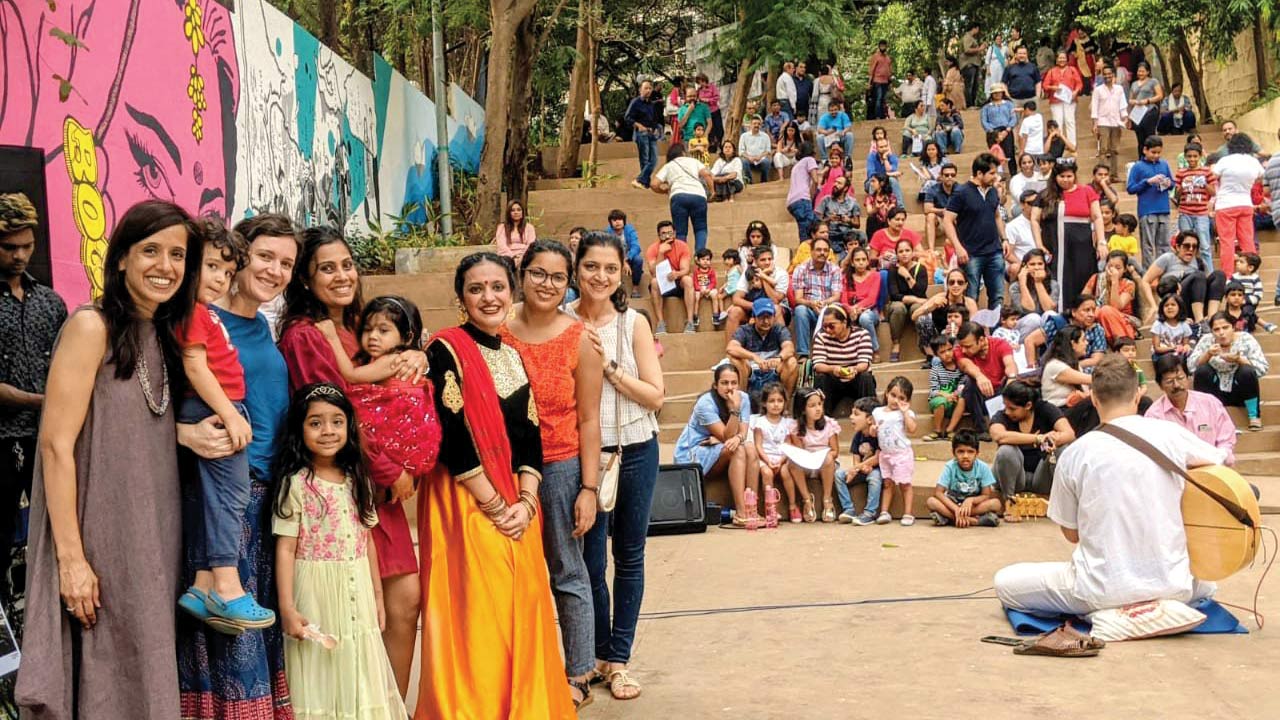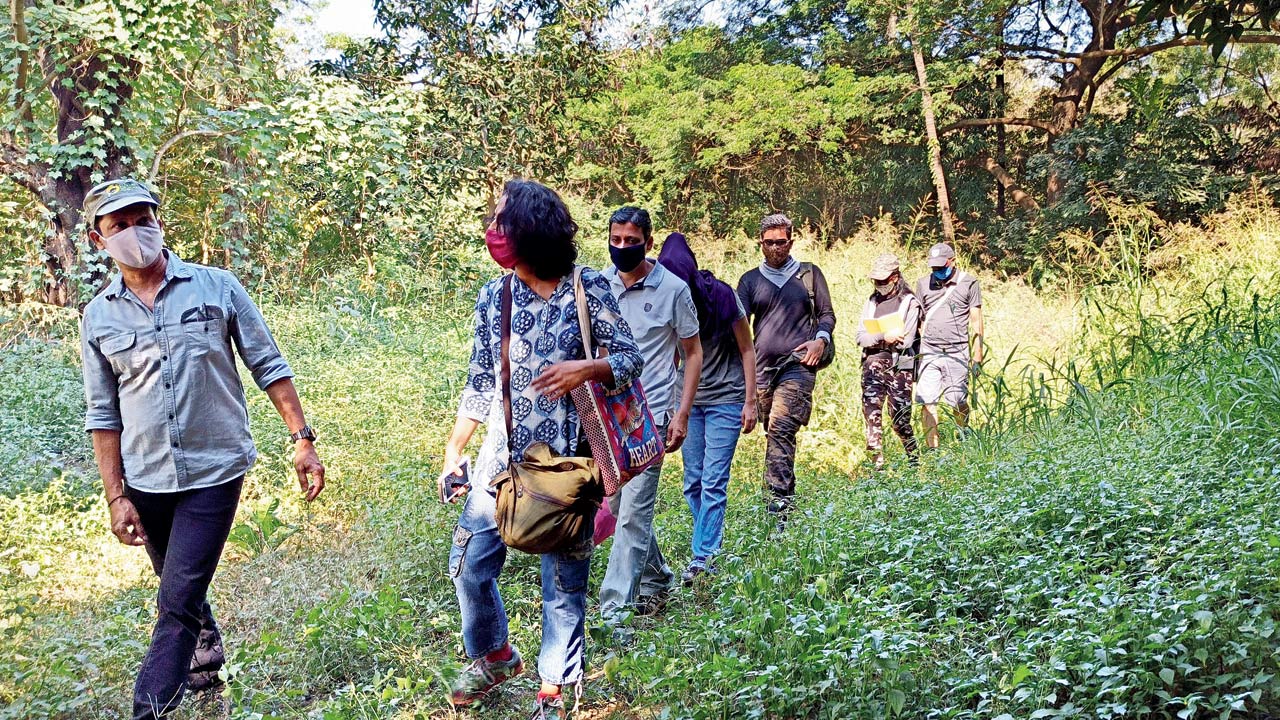The city - sliced, diced and served with a dash of sauce

A look-alike: The Mumbai monorail is reflected in a puddle in Wadala after unseasonal showers drenched the city on Wednesday. Pic/Pradeep Dhivar
Two different
 Art Deco buildings facing Oval Maidan
Art Deco buildings facing Oval Maidan
It’s a tale of two neighbourhoods. The Oval Maidan and Marine Drive areas in South Mumbai share a similar architectural history as the Dadar-Matunga locality, in the sense that both places are dotted with beautiful Art Deco buildings. But while the SoBo precinct is part of a UNESCO World Heritage Site, the buildings in Dadar-Matunga are falling into disrepair. Why is that? That’s the question Dr Kamalika Banerjee from the department of sociology at National University of Singapore will explore at an online lecture, The Curious Case of South Mumbai Civil Society. Art Deco Mumbai Trust is organising it, and founder-trustee Atul Kumar told this diarist, “The two places came up in the same style, and both served the so-called middle class and the elite. Yet, their story of conversation couldn’t be more different.” Visit townscript.com to register.
Chennai on their radar
 Stories from a Forgotten War by Parvathi Nayar and Nayantara Nayar, which will be on display at the biennale
Stories from a Forgotten War by Parvathi Nayar and Nayantara Nayar, which will be on display at the biennale
The third edition of the Chennai Photo Biennale is back in a hybrid format. Keeping in sync with the times, the biennale will be conducted both physically and digitally from December 9 to February 6, and will be available for audiences. Called Maps Of Disquiet, this event raises awareness about social, environmental and technological crises. Commenting on the theme, visual artistes and curators Arko Datto, Baoz Levin, Bhooma Padmanabhan, and Kerstin Meincke told this diarist: “Curating this biennale in these circumstances was a way of thinking about how our perceptions of the world have been shaped by images, and how images help us make sense of the world.”
Lending a hand
We all get by with a little help and ‘a little help’ is what independent artistes need the most. As we welcome the second-edition of Udaan, a level-up fund looking to mentor and support indie musicians, founder of OK Listen! Vijay Basrur shared, “Being able to help artistes reach a wider audience more effectively, feels good. We have been doing this for a while but this time, it’s only been a week that we have put out a call for applications. We are awaiting more applications.” A collaboration between OK Listen!, The Indian Music Diaries and nukeSound, the initiative will augment the journey of musicians for the next five months with resources worth '1 lakh. On being asked if they are looking for any specific entry, Basrur adds, “We are not biased towards any genre. All we need is a singer-songwriter.”
For community’s sake
 A music event in December, 2019, at The Steps
A music event in December, 2019, at The Steps
It is intrinsic to link a city to its social and cultural fabric. The St Stephens Steps at Bandra that were re-imagined and brought to life from a derelict state by architects Anca Florescu Abraham and Alan Abraham are now looking for street/mural artists for its sidewalls. “We are calling for artists to send their mural art proposals around the concept of joy. We have had two very rough years during which the idea of coming together or community was somewhat defeated. Since coming together brings us joy, we themed our project around that,” Anca said. The call for submissions closes on December 8. She also mentions that they have not received too many entries yet and are waiting for the call to catch on. To apply, log on to @thestepsbandra.
Aarey forest in safe and green hands

It would be unjust to talk about the Aarey forest, the lung of Mumbai, and not give activists and green volunteers their due credit. The Restore Aarey Forest movement recently celebrated its first birthday and community-led groups couldn’t be happier. The drive that started on November 29 last year was led by non-profit organisations, nature lovers and the tribal inhabitants of Aarey. After completing a year, Sushant Bali, a member of the Youth For Aarey initiative, told this diarist, “I think we have planted over 1,000 samples but with the recent rains, we’re thinking of assessing numbers again.” Their group consists of four members where each of them equally contributed to the restoration. “Other people who joined the drive also came with specific skills. When we started out, we had to depend on the adivasis to understand the local flora and fauna. Reforestation meant mimicking the forest that was around us. So, it was a process that involved both learning and application,” he explained. The green warriors accumulated information and ran it by experts in the field. “We got it whetted by wildlife biologist Anand Pendharkar and other researchers too.” Bali further describes how they also had to make a list of what mammals in the area eat and plant flora accordingly. Although the process has been arduous, he says the progress satisfies them and they are looking at the long road ahead.
 Subscribe today by clicking the link and stay updated with the latest news!" Click here!
Subscribe today by clicking the link and stay updated with the latest news!" Click here!








